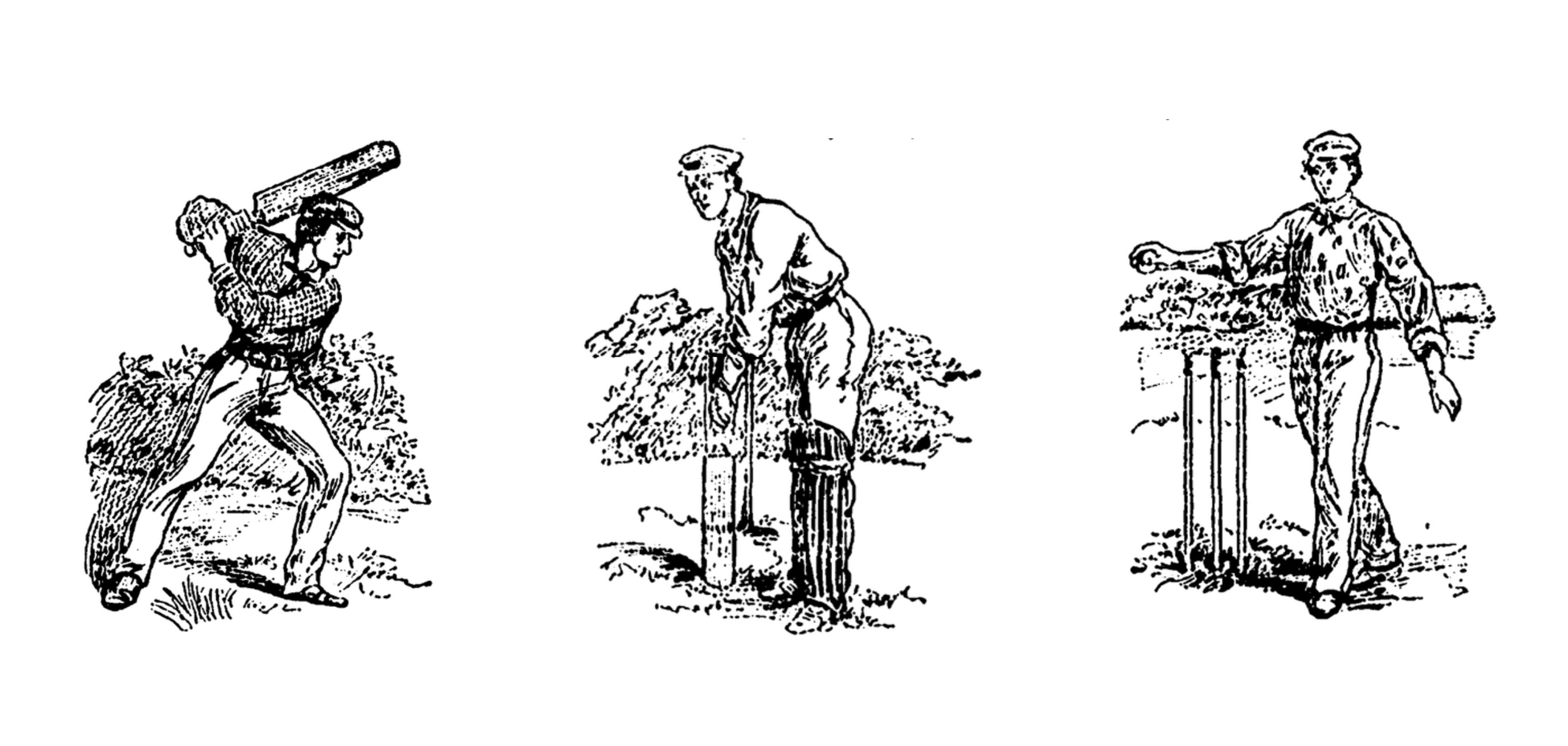Ben Tompkins lives in Chicago’s Uptown neighborhood and is fascinated with the area’s history. In particular, he’s always wondered about the origins of Cricket Hill — the 45-foot-tall, perfectly round hill just north of Montrose Avenue and east of Lake Shore Drive.
“It’s the one area that has more elevation and there’s not a lot of hills nearby,” he said. “It is too perfect of a hill.”
Ben says over the years, he’s heard a lot of speculation on the hill’s backstory, including a theory that it might have once been used by the military. So he reached out to Curious City with a question:
What’s the history of Cricket Hill near Montrose Harbor, and how did it get its name?
The answer to Ben’s question spans several centuries of Chicago history — from the influence of early British and Canadian immigrants in Chicago to a tunnel construction project in the 1940s.

The rise of cricket and ‘the cricket field’
The origins of the name ‘Cricket Hill’ start with the rise of the very British pastime of cricket in Chicago. According to a 1941 article in the Chicago Tribune, the ball-and-bat sport first emerged in 1883 after the formation of an Oak Park group called the Wanderer’s Cricket Club, whose membership consisted of mostly British and Canadian immigrants. Soon, cricket fields started popping up around the Chicago area, including the site in Armour Square where Comiskey Park was eventually built.
In the late 1920s, the Chicago Park District began planning a landfill extension east of Lake Shore Drive spanning Montrose and Foster Avenues. The Great Depression slowed progress on the project, but by the late 1930s, the area east of Montrose Avenue was turned into a wide peninsula that included a bathing beach and a large area dedicated to athletic fields — including cricket grounds.
Dennis Rodkin, a reporter for Crain's who researches Chicago history, says in the 1930s and ’40s, these grounds were the favored place of Chicago's cricket leagues to play their games. Soon, the area became known as “the cricket field.”
“There was enough cricket being played that there was league play and this spot at Wilson and the Drive was the place where cricket tournaments happened,” Rodkin says.

The Park District builds a sledding hill
In 1948, the Park District decided to construct an artificial sledding hill around Montrose Avenue as part of its landfill extension project.
Then-Park District President James Gately told the Tribune in 1949 that the cost of creating the hill was “negligible” because “the dirt for it was ‘contributed’ by a contracting firm which was happy to dispose of material excavated in a tunnel construction job.”
Unfortunately, the Tribune doesn’t specify which tunnel contributed the dirt. CTA historian Graham Garfield says the Jackson-to-La-Salle portion of the Dearborn Subway was built between 1947 and 1948, so it might have overlapped with the time of the hill’s creation. However, the CTA doesn’t have any documents confirming a relationship between the two projects.
Once the hill was constructed, Dennis Rodkin says it likely took its namesake from the adjacent athletic fields.
“It becomes pretty obvious that you can call it ‘Cricket Hill’ because it's next to ‘Cricket Field.’”
Over the years, several other theories have emerged to explain the hill’s name. One 1985 article in the Tribune titled “Believe it, or not” claimed the hill was the burial site for a circus elephant named Cricket. Our question asker Ben also heard there might be a connection between the hill and the military. This theory might have emerged because nearby Montrose Harbor was once a radar and command center for missiles. The harbor was one of around 20 missile-related sites built around the Chicago area in the 1950s as part of the United States’ defense strategy during the Cold War.

A community gathering site for all seasons
As one of the few elevated parts of an otherwise flat city, Cricket Hill has become a popular spot for sledding, skiing, jogging and dog walking.
Former Park District historian Julia Bachrach says the hill has also been a site of demonstrations and community gatherings over the years. According to the Chicago Tribune, in 1978, Yippies held a “Festival of Life” rally at the hill to remember the rioting that occurred during the 1968 National Democratic Convention. Event speakers included Black Panther Party co-founder and former “Chicago Seven” defendant Bobby Seale. In 1980, after John Lennon’s murder, 3,000 people gathered at the hill to pay homage to the former Beatle and collectively sing Lennon’s “Let’s Give Peace a Chance.”
From the late 1990s to 2019, Cricket Hill was the site of the annual spring Chicago Kids and Kites Festival featuring performances from professional kite flyers and opportunities for kids to construct, decorate and fly their own kites.
In recent years, Cricket Hill has even inspired a photographic art project called “Same Hill, Different Day,” in which photographer Paul Octavious documents activities on the hill twice a week.

When we shared what we learned with our question asker Ben, he said he appreciated learning new information about Cricket Hill’s origins but is still curious about the theory that the hill was once used by the military.
“I still wonder where that came from and why that information wasn’t readily available,” Ben says. “But maybe it’s good to still have some mystery.”

More about our question asker
Ben Tompkins moved from Michigan to Chicago’s Uptown neighborhood in 2011. He loved learning about the people and history of the area so much that in 2019 he started the Uptown Community Podcast to share stories about the neighborhood’s art, communities, and culture.
When Ben isn’t working on his podcast, he’s a 4th grade classroom assistant at Ravenswood Elementary School. He also enjoys listening to music and volunteering at the Old Town School of Folk Music, and is an organizer with ONE Northside.
Ben says his favorite memory at Cricket Hill was in 2016 when he slid down a 300-foot Slip-'N-Slide that was part of a global tour called “Slide the City.”
“I went down in an inner tube,” he says. “It was a good break from the average day in the city.”
Katherine Nagasawa is Curious City’s former digital and engagement producer. Follow her @Kat_Nagasawa.
Jason Marck is Curious City’s audio producer. Follow him at @JasonMarck.
Listen to the full episode to hear even more questions answered, including: Where can you find the best shrimp in Chicago? Why are so many Chicago street names grouped alphabetically (starting with K)? And why is there a front wall of a church — and nothing more — on the corner of 19th and Peoria in Pilsen?


